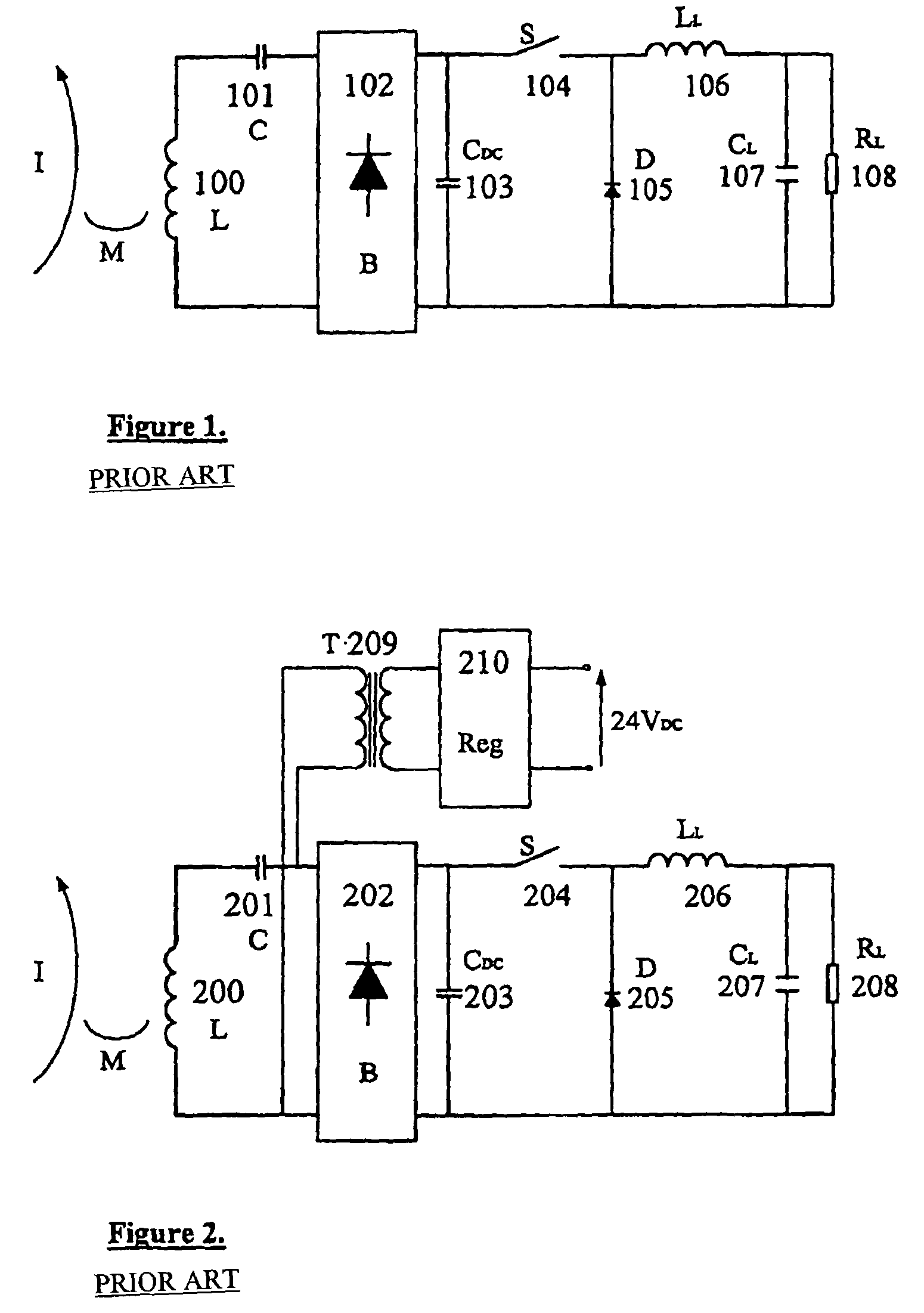Parallel-tuned pick-up system with multiple voltage outputs
a pickup system and voltage output technology, applied in the direction of ac-dc conversion, inductance, power electronics conversion, etc., can solve the problems of 2 not being able to produce an additional independent output voltage, voltage transformer connected across the rectifier,
- Summary
- Abstract
- Description
- Claims
- Application Information
AI Technical Summary
Benefits of technology
Problems solved by technology
Method used
Image
Examples
Embodiment Construction
[0046]FIG. 4 shows a circuit of the invention with two independently controllable outputs. With the parallel tuned circuit of FIG. 3 L 300 and C 301 (also shown in FIG. 4 as L 400 and C 401) the AC input current to the rectifier bridge B 302 (B 402) is essentially constant, with a magnitude given by
[0047]IML,
and is independent of either the load resistor 307 (first load 407) or the state of the switch S 304 (the switch S 404 of the first control circuit). Thus, adding current transformer CT 411, shown in FIG. 4, in series with the pick-up resonant circuit allows a transformed constant (AC) current to be input to rectifier bridge B 412 of the additional control circuit.
[0048]The circuitry of the additional control circuit after rectifier bridge B 412 (413 to 417) is identical in concept to that of FIG. 3 (303 to 307; and to the circuitry of components 403 to 407 of the first control circuit in FIG. 4) allowing a completely independent output voltage—eg 24 V DC—to be produced. Switc...
PUM
| Property | Measurement | Unit |
|---|---|---|
| output voltage | aaaaa | aaaaa |
| output voltage | aaaaa | aaaaa |
| voltage | aaaaa | aaaaa |
Abstract
Description
Claims
Application Information
 Login to View More
Login to View More - R&D
- Intellectual Property
- Life Sciences
- Materials
- Tech Scout
- Unparalleled Data Quality
- Higher Quality Content
- 60% Fewer Hallucinations
Browse by: Latest US Patents, China's latest patents, Technical Efficacy Thesaurus, Application Domain, Technology Topic, Popular Technical Reports.
© 2025 PatSnap. All rights reserved.Legal|Privacy policy|Modern Slavery Act Transparency Statement|Sitemap|About US| Contact US: help@patsnap.com



